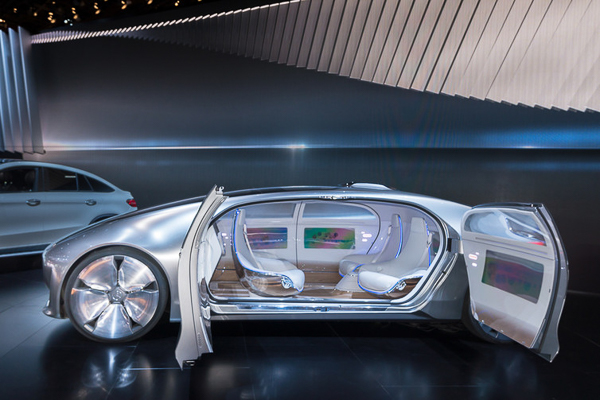
Investment managers are looking at the new possibilities being opened up by autonomous vehicle technology, including driverless cars and delivery drones, says Pictet Asset Management.
With testing of self-driving cars progressing ever forward, and driverless buses and autonomous long-distance lorries not far behind, international consultancy firm McKinsey forecasts that up to 15% of passenger vehicles sold globally in 2030 will be fully autonomous, while revenues in the automotive sector could nearly double to US$6.7 trillion (€6.34 trillion) thanks to shared mobility (car-sharing, e-hailing) and data connectivity services (including apps and car software upgrades).
According to Pictet, new players such as Tesla Motors and tech giants like Google to Microsoft2 and a host of start-ups are competing against – and often working with – traditional manufactures like Ford, General Motors and Nissan to turn such predictions into reality.
But even if technology, regulation barriers and ethical dilemmas delay the commercial-scale launch of fully driverless cars beyond 2020, partial automation is already on the way with the introduction and ongoing refinement of advanced driver assistance systems (ADAS). This market alone is expected to grow to US$34 billion (€32 billion) by 2020 – representing a compound annual growth rate of 40%, with global penetration rate tripling to 48%.
Pictet says that one key area for technological improvement – and thus potential investment opportunities – lies in security. In the United States alone, the National Highway Traffic Safety Administration (NHTSA) estimates that motor vehicle crashes cost the economy almost US$1 trillion (€946 billion) a year, including the loss of productivity.
Swedish manufacturer of car safety gear, Autoliv, estimates that its products – which include a wide range of driver assist radars and an infrared night vision system alongside improved airbag and seatbelt technology – help save 30,000 lives a year and prevent 10 times as many injuries.
Cars may soon also have voice-recognition technology and be able to communicate with other vehicles or emergency services, warning each other of hazards as well as communicating with bridges and traffic lights.
Already, top-of-the-range cars from Cadillac and Mercedes-Benz include vehicle-to-vehicle (V2V) communication technology, which, at its simplest level, will enable cars to share their position, speed, steering-wheel position and brake status with each other to help spot incoming vehicles and reduce the likelihood of crashes. Taken to the next level, cars could warn each other about traffic jams and dangerous road conditions, as well as “communicating” with bridges and traffic lights.
An eCall feature – set to be mandatory for all new cars in Europe from April 2018 – will automatically contact the emergency services in case of a serious accident, communicating the location of the vehicle and other details. According to Pictet, this measure alone is expected to save more than 1,000 lives per year.
The latest automotive technology is already deeply rooted in the world of robotics and artificial intelligence. The machine-vision systems developed by Israeli driving assistant software maker Mobileye, for example, have been trained to identify pedestrians, monitor blind spots and decode traffic signs.
France’s Valeo, meanwhile, is working on a new generation parking system that will enable drivers to leave the car and then use a smartphone to instruct the vehicle to park itself. In the drone world, Amazon is one of several companies currently carrying out testing of light unmanned craft, with the eventual intention of offering customers automated deliveries within just 30 minutes.
The autonomous vehicle (AV) revolution is also spreading to the skies with the development of drones for the delivery of everything from parcels to organ transports, monitoring crop growth, mapping and photographing hard to reach areas and more.
Beyond transportation, robotic AVs are finding application in the industrial world. Online retail giant Amazon, for example, uses bright-orange autonomous robots to move goods and parcels around its warehouses. Hospitals, meanwhile, are embracing a breed of mobile machines to transport lab specimens, medicine and other supplies, and another one which can sterilise rooms by killing germs with blasts of light. In the energy sector, remotely operated underwater vehicles (ROVs) can go out in conditions which are too rough or water which are too deep for humans to inspect pipelines and drilling platforms.
There are, of course, still many hurdles to overcome. For fully automated cars – which do not need a driver – these include yet-to-be-developed technology, winning public trust for an essentially new mode of transportation and the need for new rules and regulations on everything from the highway code to car insurance.
For drones, developers need to resolve issues over battery life and find a way to safely coexist with all the other flying objects and beings in the sky.
Over time, though, the trend is clearly for robots to take on greater and greater control of our roads and skies. For investors, this is an opportunity to get behind the wheel of change sweeping through the transportation industry.








